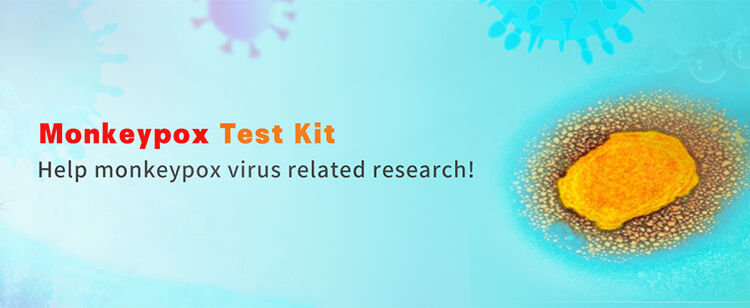Monkeypox virus (MPV) is an orthopoxvirus that causes a disease with symptoms similar, but less severe to smallpox. While smallpox was eradicated in 1980, monkeypox continues to occur in countries of central and west Africa. Two distinct clade are identified: the west African clade and the Congo Basin clade, also known as the central African clade. In May 2022, multiple cases of monkeypox were detected in several non-endemic countries, making it urgent to further understand the epidemiology, source of infection and mode of transmission of this disease.

Fig. Monkeypox epidemic map (Source: World Health Organization; May 21)
Monkeypox virus (MPV) is a double-stranded DNA virus belonging to orthopoxviruses of the Poxviridae family. It is one of the human orthopoxviruses, including variola (VACV), vaccinia (CPX) and vaccinia (VACV) viruses. Monkeypox virus is about 200-400 nm in size, brick or oval in shape, with stable DNA structure, which can repair itself when mutation occurs.
Monkeypox is a zoonosis: a disease that is transmitted from animals to humans. Cases are often found close to tropical rainforests where there are animals that carry the virus. Evidence of monkeypox virus infection has been found in animals including squirrels, Gambian poached rats, dormice, different species of monkeys and others.
Human-to-human transmission is limited, with the longest documented chain of transmission being 6 generations, meaning that the last person to be infected in this chain was 6 links away from the original sick person. It can be transmitted through contact with bodily fluids, lesions on the skin or on internal mucosal surfaces, such as in the mouth or throat, respiratory droplets and contaminated objects.
Monkeypox virus invades human body from respiratory mucosa, multiplies in lymphocytes and invades blood stream to produce transient viremia. After intracellular reproduction, the cells invade the blood stream and run to the whole body skin reproduction, causing lesions.
The incubation period of monkeypox can range from 5 to 21 days. The febrile stage of illness usually lasts 1 to 3 days with symptoms including fever, intense headache, lymphadenopathy (swelling of the lymph nodes), back pain, myalgia (muscle ache), and an intense asthenia (lack of energy). The febrile stage is followed by the skin eruption stage, lasting for 2 to 4 weeks. Lesions evolve from macules (lesions with a flat base) to papules (raised firm painful lesions) to vesicles (filled with clear fluid) to pustules (filled with pus), followed by scabs or crusts.
The disease is self-limiting, with symptoms usually lasting 2 to 4 weeks and going away without treatment, the proportion of patients who die has varied between 0 and 11% in documented cases. The main difference between the symptoms of smallpox and monkeypox is that monkeypox causes lymph nodes to swell, whereas smallpox does not.







